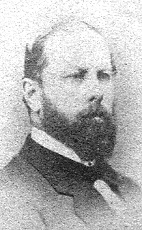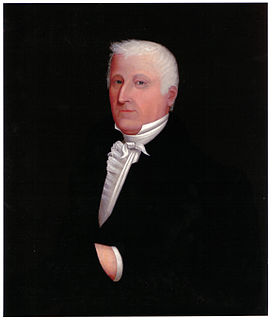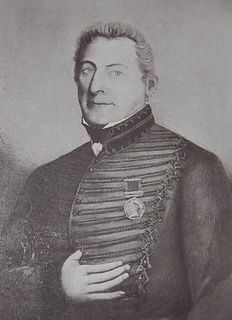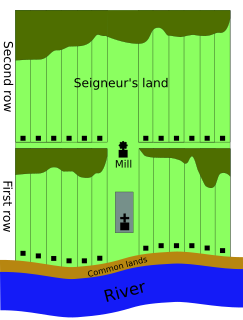
Louis-Joseph Papineau, born in Montreal, Quebec, was a politician, lawyer, and the landlord of the seigneurie de la Petite-Nation. He was the leader of the reformist Patriote movement before the Lower Canada Rebellion of 1837–1838. His father was Joseph Papineau, also a politician in Quebec. Papineau was the eldest of eight children and was the grandfather of the journalist Henri Bourassa, founder of the newspaper Le Devoir. The Papineau metro station was named after him.

Sir Louis-Hippolyte MénardditLa Fontaine, 1st Baronet, KCMG was the first Canadian to become Premier of the United Province of Canada and the first head of a responsible government in Canada. He was born in Boucherville, Lower Canada in 1807. A jurist and statesman, La Fontaine was first elected to the Legislative Assembly of Lower Canada in 1830. He was a supporter of Papineau and member of the Parti canadien. After the severe consequences of the Rebellions of 1837 against the British authorities, he advocated political reforms within the new Union regime of 1841.
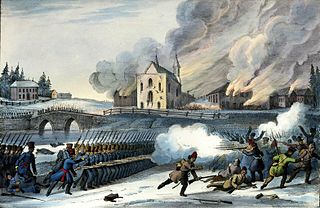
The Lower Canada Rebellion, commonly referred to as the Patriots' War by Québécois, is the name given to the armed conflict in 1837–38 between the rebels of Lower Canada and the British colonial power of that province. Together with the simultaneous rebellion in the neighbouring colony of Upper Canada, it formed the Rebellions of 1837–38.

This section of the Timeline of Quebec history concerns the events in British North America relating to what is the present day province of Quebec, Canada between the time of the Constitutional Act of 1791 and the Act of Union 1840.

Wolfred Nelson was from 1854 to 1856 the mayor of Montreal, Quebec.

Events from the year 1837 in Canada.

Ludger Duvernay, born in Verchères, Quebec, was a printer by profession and published a number of newspapers including the Gazette des Trois-Rivières, the first newspaper in Lower Canada outside of Quebec City and Montreal, and also La Minerve, which supported the Parti patriote and Louis-Joseph Papineau in the years leading up to the Lower Canada Rebellion.

Charles Marcil, was a longtime member of the House of Commons of Canada and served as Speaker of the House from 1909 - 1911.
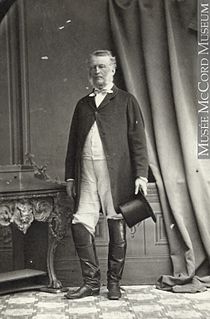
Bartholomew Conrad Augustus Gugy represented Sherbrooke in the Legislative Assembly of Lower Canada and the Legislative Assembly of the Province of Canada. He played a prominent military role in the Lower Canada Rebellion as Colonel of the cavalry at the Battle of Saint-Charles, afterwards seizing the Column of Liberty and carrying it in triumph back to Montreal. He was Police Magistrate at Montreal and Adjutant-General to the Militia of Lower Canada. He lived between Montreal and his father's manor house at Beauport. He was a large landowner having also inherited the Seigneuries of Yamachiche, Rivière-du-Loup, Grandpré, Grosbois, and Dumontier.

Michel-Eustache-Gaspard-Alain Chartier de Lotbinière, 2nd Marquis de Lotbinière, though to keep political favour with the British he never used the title. He was seigneur of Vaudreuil, Lotbinière and Rigaud. He was the Speaker of the House of Commons in Lower Canada who saw to it that the French language was recognised as equal to English in the Quebec Parliament, where a painting of him giving the speech still hangs above the Speaker's chair.
William Henry Scott was a businessman and political figure in Lower Canada and Canada East.

Jean-Olivier Chénier was a physician in Lower Canada. Born in Lachine. During the Lower Canada Rebellion, he commanded the Patriote forces in the Battle of Saint-Eustache. Trapped with his men in a church by the British troops who set flames to the building, he was killed while attempting to escape through a window. He died to shouts of "Remember Weir!", a reference to George Weir, a British spy executed by the Patriotes. After pillaging of the village, the British mutilated Chénier's corpse to scare and humiliate his Patriote supporters:

Lt.-Colonel The Hon. Robert Unwin Harwood was the last Seigneur of Vaudreuil, commanding officer of the Vaudreuil Militia, and for thirty years a political figure in Lower Canada and Canada East.
Robert William de Lotbinière-Harwood was a landowner and political figure in Lower Canada and Quebec. He represented Vaudreuil in the House of Commons of Canada as a Liberal-Conservative member from 1872 to 1878.
The following is an incomplete bibliography of the 1837-1838 insurrections in Lower Canada in the English and French languages, by publication date and document type.
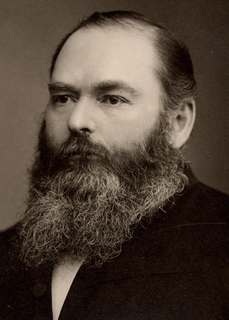
Charles Laplante dit Champagne was a lawyer, judge and political figure in Quebec. He represented Deux-Montagnes in the Legislative Assembly of Quebec from 1876 to 1882 as a Conservative. His name also appears as Charles Champagne.
André-Benjamin Papineau was a notary and political figure in Lower Canada. He represented Terrebonne in the Legislative Assembly of Lower Canada from 1837 until the suspension of the constitution in 1838.
